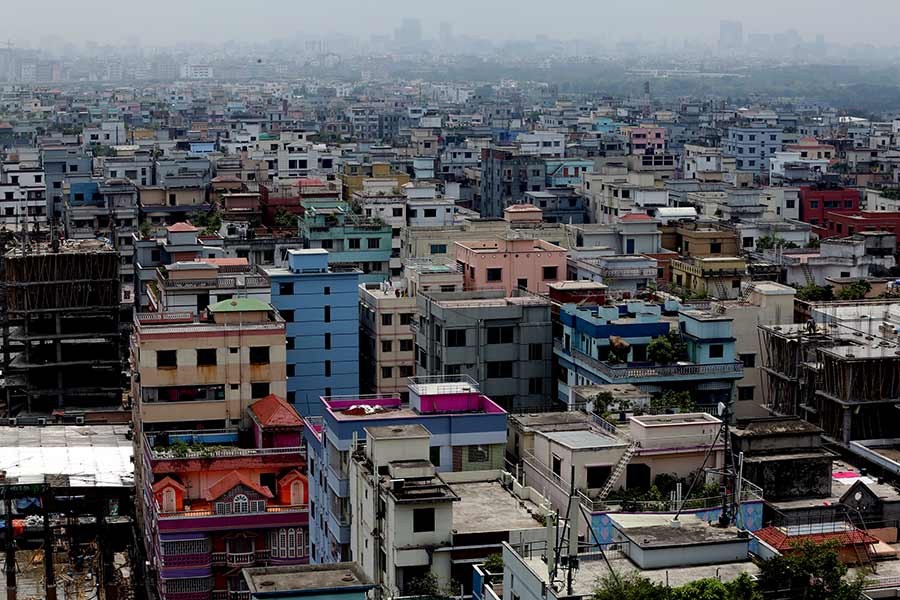The Economist Intelligence Unit (EIU), a London-based forecasting and advisory service provider, has again ranked Dhaka as the second least liveable city in the world. The city got such a dismal ranking mainly due to non-availability of adequate infrastructure.
According to the EIU survey, Dhaka is just above the war-torn Syrian capital Damascus in the worst ranking. For the first time in the survey's history, Austria's capital Vienna has emerged as the most liveable among the cities.
According to EIU, every city is rated on the basis of its relative comfort for over 30 qualitative and quantitative factors across five broad categories - stability, healthcare, culture and environment, education and infrastructure.
Liveability does not necessarily depend on economic affordability but on environmental and social consciousness. It has been observed that there is an increasing trend here to measure the country's progress on the basis of gross domestic product (GDP). In fact, as the experts viewed, progress will be visible when there would be equity and everyone abides by the law.
So many development plans were taken up for the city, but few were implemented. Overnight, city land was gobbled up, almost all the rivers and canals were filled up and public places grabbed by powerful quarters in violation of master plans as the custodians turned into 'predators'.
Working hour worth Tk 300 billion and fuel worth about Tk 200 billion are lost annually due to the unprecedented traffic snarls in the city. Streams of people are moving here from all over the country in search of jobs and alms. Endless migration continues without any hindrance.
At least 2.50 million people working in garment factories and other industries in and around the city find it extremely difficult to find a shelter in the confines of the city. The way low-income people live in slum areas in different parts of the city beggar description. Unhygienic condition leaves scores of them to suffer from many chronic diseases.
The detailed area plan (DAP) of the city could not be implemented fully due to strong opposition from pressure groups and powerful lobbies. The loss in traffic jam in one year could cover the cost of construction of an underground railway line in the city.
Double-decker buses replacing innumerable small buses and cars can help significantly relieve traffic problems to increase urban liveability, particularly in Dhaka. More and more double-decker buses with a single-decker at its tail reserved for women is another way of dealing with the situation.
The number of private cars must be reduced to make way for optimum use of the road for public movement. Civic amenities like a public square for city dwellers at the old airport can significantly improve liveability, while a hawkers' plaza could resolve the traffic chaos at Farmgate. A liveable city must have open public places to build community ownership of the city.
Dhaka city has become one of the world's truly hopeless urban cases. Fleeing droughts, floods, and starvation, people have been streaming into the city from the countryside, making it distressingly sick.
Added to this, there are concerns about the environmental degradation of the city that evidently manifests its decline. Air pollution caused by vehicle emission, despite changeover to CNG-driven vehicles, is still the worst. Dhaka's sky is no longer blue, it is grey. Health experts claim that the air in the city will soon become impossible to breathe.
One of the major threats to the city due to declining groundwater levels is land subsidence, which can be triggered by earthquakes of greater magnitudes. Recently, a series of earthquakes of magnitudes ranging from 4.0 to 5.2 on the Richter scale jolted Dhaka and other parts of the country.
Although no damage to the infrastructure of the city was reported, there is a possibility collapse of infrastructures and also of land subsidence associated with earthquakes, particularly in areas of greater groundwater-storage depletion.
Only way to reverse the situation is to make outskirts of the city the epicentres of growth, create employment opportunities by setting up SMEs (small and medium enterprises), opening healthcare facilities, entertainment outlets like parks, cultural rendezvous of different denominations, etc.
The regulators should aim at saving Dhaka from ultimate devastation. Establishment of rule of law and political commitment is necessary for healthy urbanisation.


